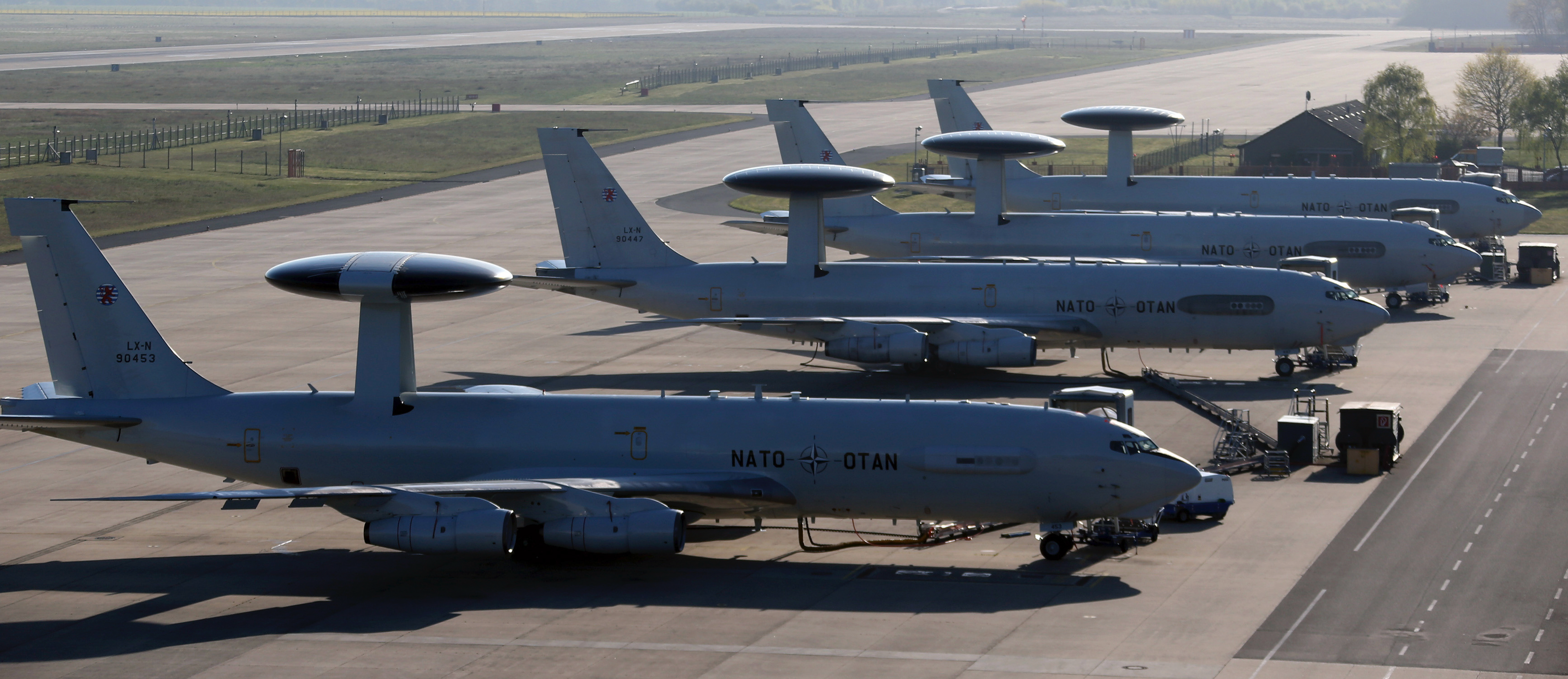
NATO air base in Germany raises security level due to “potential threat”
PHOTO CAPTION: NATO AWACS (Airborne Warning and Control Systems) aircrafts are seen on the tarmac at the AWACS air base in Geilenkirchen near the German-Dutch border April 16, 2014. REUTERS/Francois Lenoir
BERLIN (Reuters) - The NATO air base in the German town of Geilenkirchen remained at high alert on Friday, a spokesperson said, after the security level was raised overnight "based on intelligence information indicating a potential threat".
"We are still at Charlie," a spokesperson for the base told Reuters, referring to the second-highest of four states of alert.
Security level Charlie is defined as "an incident has occurred or intelligence has been received indicating that some form of terrorist action against NATO organisations or personnel is highly likely".
The spokesperson said the base housing NATO's fleet of AWACS surveillance planes was working with minimal staffing as a precautionary measure as operations continued as planned.
She added there was no connection to an incident last week when the security level at the base was briefly raised as a military base in nearby Cologne investigated a suspected sabotage of the water supply.
The same day, the base in Geilenkirchen also reported an attempted trespassing incident that prompted a full sweep of the premises.
With regard to the suspected sabotage at the base in Cologne, the German military later gave the all-clear, saying test results had shown that the tap water was not contaminated.
NATO has warned in the past of a campaign of hostile activities staged by Russia, including acts of sabotage and cyberattacks. Russia has regularly accused NATO of threatening its security.
In June, NATO Secretary-General Jens Stoltenberg said the Western military alliance saw a pattern evolving and that recent attacks were a result of Russian intelligence becoming more active.
Several incidents on NATO territory have been treated as suspicious by analysts in recent years, among them the severance of a vital undersea cable connecting Svalbard to mainland Norway in 2022.
(Reporting by Sabine Siebold; Editing by Christina Fincher)









